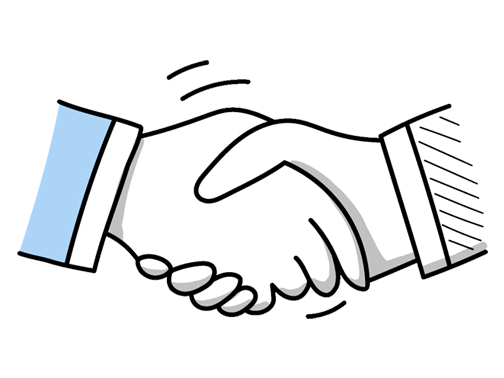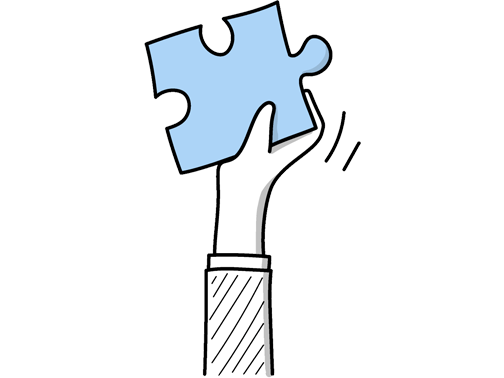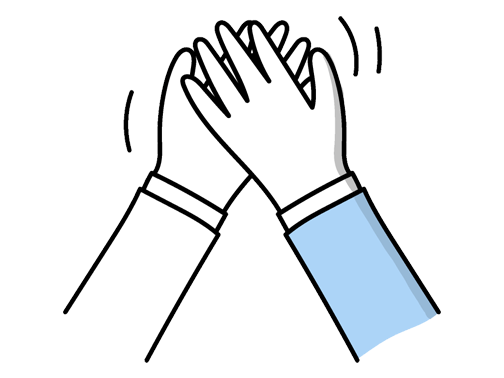Assembly Line Worker Interview Questions (2025 Guide)
Find out common Assembly Line Worker questions, how to answer, and tips for your next job interview
Practice Interviews Online - Identify your strengths and weakness in a realistic Assembly Line Worker mock interview, under 10 minutes
Practice Now »Assembly Line Worker Interview Questions
What they want to understand with this question is how you recognize when a teammate needs help and how you contribute to the team's success by offering support. You should explain a situation where you noticed a colleague struggling, describe how you helped them improve their work, and show how this made the whole team perform better.
Example: In my previous role, I noticed a teammate struggling with a new machine setup. I took a moment to walk them through the steps, sharing tips I’d learned. This not only helped them complete the task more confidently but also kept the line running smoothly. Supporting each other like that really improves overall team performance and morale.
What they want to know is that you prioritize safety and understand the risks around you. You need to say that you always follow safety protocols carefully and stay alert to protect yourself and your coworkers.
Example: I always stay aware of my surroundings and follow all safety guidelines carefully, like wearing the right protective gear and handling tools properly. If I notice something unsafe, I speak up or fix it if I can. I also communicate clearly with my teammates to avoid accidents—simple things like checking before moving machinery have helped keep everyone safe on past lines I've worked on.
Questions like this assess your awareness of workplace safety and your commitment to preventing accidents. You need to mention following protocols like wearing protective gear, inspecting equipment regularly, and working closely with coworkers to maintain a safe environment.
Example: When working on an assembly line, I always make sure to wear the correct safety gear and stay alert to any signs of malfunction or hazards. I communicate regularly with my team to quickly address any issues that could cause accidents. For example, if I notice a loose part or spillage, I report it immediately to keep everyone safe and maintain a smooth workflow.
This interview question aims to assess how well you work with others and support the team’s overall goals. In your answer, emphasize your reliability in meeting targets, your clear communication and readiness to help teammates, and your flexibility in adapting to different tasks or roles.
Example: In a team, I focus on being dependable and making sure my part of the work gets done well and on time. I stay open to communicating clearly and helping others if they need a hand. For example, in my last role, I stepped in to support a teammate when they were falling behind, which helped keep the whole line running smoothly. I believe staying flexible and positive helps the whole team succeed.
Interviewers ask this to see how you handle challenges and ensure quality in a fast-paced environment. You need to explain a specific problem you noticed, the actions you took to fix it, and the positive outcome that followed.
Example: During a shift, I noticed a machine was causing a bottleneck because it wasn’t syncing properly with the rest of the line. I quickly reported it to the supervisor and suggested we pause briefly to recalibrate the settings. This small adjustment improved the flow, preventing further delays and keeping the team on track to meet our targets. It showed me the value of staying attentive and speaking up promptly.
Hiring managers ask this question to see if you can quickly spot dangers and respond properly to keep everyone safe. You need to explain a specific example where you noticed a hazard, took immediate action like alerting a supervisor, and followed safety procedures to resolve it.
Example: In a previous role, I noticed a spill on the workshop floor that could have caused someone to slip. I quickly reported it and helped clean it up to prevent any accidents. I always keep an eye out for anything that might pose a risk and follow the safety guidelines closely to make sure everyone stays safe throughout the shift.
Employers ask this question to see if you can communicate clearly and work well with others to keep the assembly line running smoothly. You need to say that you share instructions simply, listen carefully to your teammates, and coordinate handoffs to ensure everyone stays on the same page and the work moves efficiently.
Example: To keep things running smoothly on the line, I make sure to speak clearly and listen carefully to what others say. If someone points out an issue or suggests a better way, I take it on board right away. Working together like that helps us hit our targets without delays. Once, when a part was going missing, quickly sharing that info with the team helped us fix the problem before it affected the whole shift.
Hiring managers ask this question to see if you can quickly evaluate problems and keep the assembly line running smoothly. You need to explain how you assess which issues must be fixed immediately to prevent major stoppages, organize your tasks to reduce downtime, and communicate effectively when you need help.
Example: When multiple issues come up on the line, I first identify which problem affects production the most and handle that right away to keep things moving. If something needs extra help, I’m quick to alert a supervisor or team member so we don’t lose time. Staying calm and clear about what’s happening helps the whole team stay focused and get back on track smoothly.
Interviewers ask this to assess your practical skills and safety awareness on the job. You need to clearly describe the types of machines you've operated and emphasize your attention to safety and efficiency while working.
Example: In my previous role, I regularly worked with various machines on the line, ensuring everything ran smoothly and safely. I’m comfortable with tasks like monitoring equipment, performing routine checks, and making minor adjustments to keep production steady. For example, when a machine slowed down, I was able to identify the issue quickly and collaborate with the team to resolve it without halting the whole line.
Interviewers ask this to see if you actively prioritize safety and follow workplace rules. You should say you regularly attend safety meetings, report hazards immediately, and always use protective gear to keep yourself and others safe.
Example: I make it a point to stay updated by attending all safety briefings and reading any new guidelines shared. I also keep an eye out for potential hazards on the line and speak up if something seems unsafe. Following the rules isn’t just about compliance for me—it’s about making sure everyone goes home safe at the end of the day.
What they want to know is if you understand the importance of consistent quality in each product to keep the assembly line efficient and safe. You should say that you follow all procedures carefully and double-check your work to catch mistakes early.
Example: To maintain quality on the assembly line, I stay focused and follow each step carefully, making sure parts fit correctly. If I spot any issues, I address them right away or ask a supervisor. For example, once I noticed a misaligned component early and stopped the line to fix it, preventing bigger problems later. Consistency and attention to detail are key to keeping everything running smoothly.
Employers ask this question to make sure you understand the importance of accuracy and quality in your work. You should say that you always review the assembly instructions before starting, use the provided tools like gauges or checklists to verify parts, and promptly report any issues to maintain product standards.
Example: To make sure I meet the product specifications, I carefully review the technical sheets before starting and keep them close while working. I pay close attention to every detail and double-check measurements as I go. If something doesn’t seem right, I stop and compare it with the guidelines or ask a supervisor. Using the right tools properly helps me maintain the quality expected on the line.
Questions like this assess your teamwork and communication skills in a fast-paced environment. You need to say that you stay calm, listen carefully, and work together to find a quick solution without disrupting the workflow.
Example: When conflicts arise on the assembly line, I focus on staying calm and listening carefully to my coworker’s perspective. Once I understand their point, I try to find a practical solution that keeps the workflow smooth. For example, if there’s a disagreement about a task, I suggest we break it down together and agree on a clear plan. This helps us work better as a team and avoid delays.
This interview question helps employers understand how you handle problems and ensure the assembly line runs smoothly. You need to say that you carefully observe and gather information to identify the problem, test possible causes step by step, and communicate or ask for help when needed.
Example: When I encounter an issue I’m unsure about, I start by carefully observing what’s happening and gathering as much detail as I can. Then, I try different simple fixes one at a time to see what might be causing the problem. If I’m still stuck, I’m comfortable asking a teammate or supervisor for advice. For example, once a machine stopped, and by checking step-by-step, then consulting a colleague, we fixed it quickly without downtime.
Interviewers ask this question to see how well you work with others and contribute to team success. In your answer, clearly explain how you communicated tasks and timelines, supported your teammates, and consistently met your own targets to help achieve the production goal.
Example: In my previous role, we had a tight deadline to meet a large order. I made sure to keep in constant contact with my colleagues, sharing updates and offering help whenever needed. When a teammate fell behind, I stepped in to assist without hesitation. By staying connected and supporting each other, we not only met the deadline but also maintained high-quality work throughout the process.
Hiring managers ask this to see if you have relevant skills and can handle the pace and teamwork required on an assembly line. You should briefly describe your past assembly line roles, emphasizing your ability to work efficiently and cooperate well with others.
Example: In my previous role, I worked steadily on an assembly line, focusing on quality and efficiency. I became skilled at spotting tiny defects and keeping up with a fast pace without losing accuracy. For example, I helped reduce errors by double-checking components before moving to the next stage, which kept the workflow smooth and supported the team’s daily targets.
Questions like this assess your practical experience and comfort with the tools essential for the job. You need to clearly mention the specific tools and equipment you've used and briefly explain how you handled them safely and efficiently.
Example: I’ve worked with a variety of tools common to assembly lines, such as pneumatic screwdrivers, torque wrenches, and inspection gauges. I’m comfortable operating conveyor systems and using measuring instruments to ensure quality. In my previous role, I regularly handled hand tools like pliers and cutters while keeping safety and efficiency in mind. I find that being familiar with both simple and specialised equipment helps maintain a smooth workflow.
This interview question assesses your ability to stay focused, adaptable, and work well with others under pressure. You need to explain how you maintained attention during busy shifts, quickly adjusted to changes, and communicated effectively with your team to meet production goals.
Example: Yes, I have worked in busy production settings where keeping pace is key. I stay focused by breaking tasks into manageable steps and quickly addressing any issues that come up. Clear communication with my team ensures we stay coordinated and efficient, especially during rush times. For example, when machines slowed unexpectedly, I helped adjust workflows to keep things moving smoothly without compromising quality.
This interview question aims to see how you handle issues on the assembly line quickly and thoroughly to keep production running smoothly. In your answer, explain how you spot problems early, work with your team to fix them fast, and take steps to prevent them from happening again.
Example: When an issue arises, I first pause to understand what’s really causing it, rather than just treating the surface symptoms. I then take practical steps to fix it quickly, keeping communication clear with my team. After resolving it, I look for ways to stop it from happening again—like checking if a part needs adjusting or if we can improve a process. This helps keep the line running smoothly.
Questions like this help interviewers understand your commitment to workplace safety and how you apply safety protocols. You need to say that you actively participate in safety trainings and explain how they taught you to follow procedures that prevent accidents and ensure a safe work environment.
Example: Yes, I have taken part in safety training at my previous job. It really highlighted the importance of following procedures to prevent accidents, like wearing protective gear and keeping work areas tidy. One time, I learned how quickly a small mistake can cause harm, which made me more aware and careful on the line. It’s clear that safety isn’t just a rule but something that protects everyone’s well-being.
Interviewers ask this to see how you handle difficulties and solve problems under pressure. You need to explain a specific challenge you faced and briefly describe how you overcame it while staying productive and focused.
Example: One of the toughest parts was maintaining focus during repetitive tasks while meeting quality standards. For example, staying alert on a long shift to catch any small defects required both concentration and discipline. Over time, I developed routines to keep myself engaged, which helped me contribute to a smoother workflow and fewer errors. It taught me the importance of consistency and attention to detail in a team environment.
This interview question is asked to assess your problem-solving skills and your ability to stay calm and effective under pressure. You need to explain the situation briefly, describe the steps you took to identify and fix the problem, and highlight your teamwork or communication if involved.
Example: Yes, I’ve had to handle machine issues on the line before. Once, when a conveyor belt slowed unexpectedly, I quickly checked for obvious jams and reset the system. I then reported the problem to maintenance to prevent delays. Staying calm and acting promptly helped keep production moving smoothly while avoiding bigger disruptions.
Questions like this assess your ability to stay calm and make effective decisions under pressure. In your answer, briefly describe the problem, the quick action you took, and the positive result that followed.
Example: Sure! Here’s a concise, naturally flowing answer for your interview:
Once, a machine slowed down unexpectedly during my shift. Instead of waiting, I quickly checked for any obvious jams and cleared a small blockage, which got the line moving again. It was important to act fast to avoid delays and keep the team on track. That moment showed me how staying calm and attentive really makes a difference in a busy environment.
What they want to know is how your previous experience makes you a good fit for the assembly line role by showing you have the right skills and work habits. You should explain your hands-on experience with assembly tools and machinery, give examples of staying productive, and mention times you successfully worked with a team.
Example: In my previous roles, I’ve developed a strong hands-on approach, focusing on completing tasks accurately and on time. Working closely with others has taught me how to communicate clearly and keep things running smoothly, even under pressure. For example, in my last job, I was responsible for assembling parts quickly while maintaining quality, which helped me get comfortable with a fast-paced, team-driven environment.
Interviewers ask this to see if your experience matches the products they make and to understand your skills and adaptability. You need to clearly describe the specific products you assembled and highlight any relevant skills or processes you used.
Example: In my previous roles, I’ve worked on assembling a variety of products, from small electronic components to larger household items like kitchen appliances. I’m comfortable following detailed instructions and working efficiently on repetitive tasks while maintaining quality. For example, I helped put together parts for washing machines, ensuring each unit met the required standards before moving along the line.
Ace your next Assembly Line Worker interview with even more questions and answers
Common Interview Questions To Expect
The interviewer is looking to see how you found out about the job opening. You can answer by mentioning a job board, company website, referral, or recruitment agency.
Example: I actually found out about this position through a job board online. I was actively searching for assembly line worker roles and came across this opportunity. It seemed like a great fit for my skills and experience.
The interviewer is looking for your motivation, passion, and understanding of the role. You can answer by discussing your skills, experience, interest in the industry, or how the role aligns with your career goals.
Example: I've always been interested in manufacturing and I enjoy working with my hands. I have experience in assembly line work and I find it satisfying to see a finished product come together. This role aligns with my career goals of gaining more experience in the industry and advancing my skills.
The interviewer is looking for your career goals and aspirations, as well as your commitment to the company. You can answer by discussing your desire for growth within the company or industry, or your long-term career plans.
Example: In five years, I see myself continuing to excel in my role as an assembly line worker, possibly taking on more responsibilities or even moving into a leadership position. I am committed to growing within the company and contributing to its success. Ultimately, I hope to become a valuable asset to the team and continue to develop my skills in the manufacturing industry.
Candidates can answer by stating a specific salary range, mentioning their flexibility, or asking about the company's salary structure. Interviewers are looking for candidates who are realistic, informed about industry standards, and open to negotiation.
Example: I'm looking for a salary in the range of £20,000 to £25,000, but I'm open to discussing and negotiating based on the company's salary structure and benefits. I've done some research on industry standards and believe this range is fair for my experience and skills.
The interviewer is looking for how you handle criticism, your ability to reflect on feedback, and how you have used criticism to improve your work.
Example: Sure! One time, a supervisor pointed out that I was not meeting the production quota on the assembly line. Instead of getting defensive, I asked for specific feedback on how I could improve. I then made adjustments to my workflow and was able to meet and exceed the quota consistently.
Company Research Tips
The company's official website is a goldmine of information. Look for details about the company's history, mission, and values. Pay special attention to any information about the company's production process, as this will be directly relevant to your role as an Assembly Line Worker. Also, check if they have any news or blog section where they might share updates about their latest projects or achievements.
Tip: Don't just skim through the website. Take notes and try to understand the company's culture and work ethics. This will help you align your answers with the company's values during the interview.
Social media platforms like LinkedIn, Facebook, and Twitter can provide valuable insights about the company. You can learn about the company's latest updates, projects, and how they interact with their customers and employees. LinkedIn can also give you an idea about the company's size and the backgrounds of their current employees.
Tip: Follow the company's social media pages to stay updated with their latest news. Also, look at the comments and reviews to get an idea about the company's reputation.
Understanding the industry trends can give you an edge during the interview. Look for news articles or reports about the manufacturing industry in the UK. This will help you understand the challenges and opportunities in the industry and how the company is positioned in the market.
Tip: Use this information to show your knowledge about the industry during the interview. You can also discuss how you can contribute to the company's success in the current market scenario.
Analyzing the job description can give you a clear idea about what the company is looking for in an Assembly Line Worker. Look for the skills and qualifications required for the role. Also, try to understand the responsibilities and duties associated with the role.
Tip: Use the job description to tailor your answers during the interview. Highlight your skills and experiences that match the job requirements.
What to wear to an Assembly Line Worker interview
- Clean, well-fitted jeans or trousers
- Comfortable, closed-toe shoes
- Plain, collared shirt or polo
- Light jacket or sweater if weather permits
- Minimal jewelry and accessories
- Neat and tidy hairstyle
- Light, natural makeup for women
- Clean, trimmed nails
- Avoid overly bright or flashy colours
- Ensure clothes are ironed and free of stains





